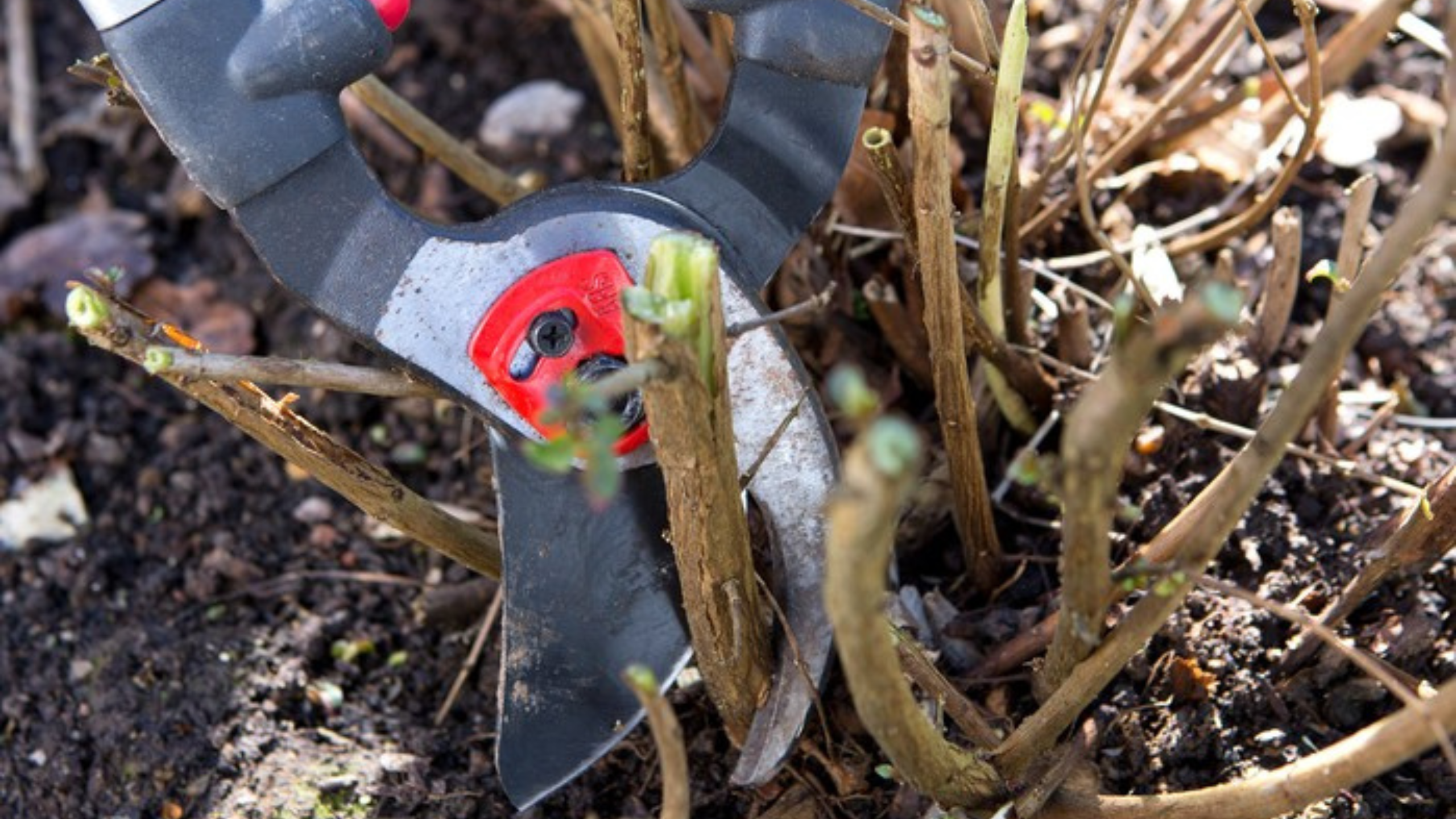As winter fades away and spring blossoms, gardeners often find themselves at a crossroads: to prune or not to prune. While many gardeners dread pruning, I wholeheartedly embrace it. If you’re in search of an easy-to-follow spring pruning guide, you’re in the right place!
In this article, I’ll outline which plants you should cut back this spring and which ones you should leave be. Let’s jump in!
What To Cut Back In Spring
1. Dead or Damaged Branches
Fruit Trees and Shrubs
If you own fruit trees or shrubs, such as hydrangeas that bloom on old wood, now’s the perfect time to make necessary cuts. Removing dead or damaged branches helps improve air circulation, preventing any potential fungal diseases.
Tip: After trimming, dispose of the dead wood far from your garden to avoid spreading diseases.
2. Summer-Flowering Shrubs (Prune Before New Growth)
Panicle Hydrangea
For summer-flowering shrubs like butterfly bush and panicle hydrangea, it’s vital to prune in early spring before new growth sets in. A light pruning from the top is usually sufficient.
Note: Don’t wait too long; pruning too late can inadvertently remove the new growth you want to preserve.
3. Perennials That Died Back In Winter
Hostas
With spring’s arrival, certain perennials like peonies, hostas, and daylilies might need some attention. Use small pruning shears to remove any dead parts that have surfaced.
Removing these dead perennials helps eliminate disease risks and lessens stress on your flourishing plants.

4. Overgrown Shrubs & Hedges
Boxwood
Overgrown shrubs and hedges can quickly create a disheveled garden appearance. In spring, trim back these unruly plants. Cut away long branches to restore a neat shape.
5. Roses
Hybrid Tea Roses
As with other perennials and shrubs, cutting back roses in spring helps remove dead or damaged wood, which encourages healthy growth. Use sharp pruning shears to eliminate weak stems, promoting a vibrant flowering season.
What NOT To Cut Back In Spring
1. Spring-Flowering Shrubs (Prune After They Bloom!)
Forsythia
Pruning spring-flowering shrubs while they’re blooming can damage their delicate flowers. Wait until after these plants, such as forsythia, lilac, and azaleas, have finished blooming to trim them safely.
2. Early-Blooming Bulbs
Daffodils
Be cautious with early-blooming bulbs like daffodils and tulips. Pruning them too soon can drain their energy reserves. Allow the foliage to fade naturally before trimming.
3. Ornamental Grasses
Maiden Grass
While the ideal time to trim ornamental grasses is late winter, some people may miss this window. If you must prune in spring, do so with care, avoiding any new shoots.
4. Trees That “Bleed” Sap If Pruned In Spring
Birch Trees
Certain trees, like maple, birch, elm, and walnut, can bleed sap if pruned in spring. This can stress the tree and make it more susceptible to disease. Prune these trees in late winter when they are dormant.
Conclusion
Spring pruning can feel intimidating, but it’s essential for maintaining the health and beauty of your garden. Pruning at the right time and in the right way can prevent irreversible harm to your plants.
Make sure your pruning shears are sharp, and stay informed about what to cut and what to leave alone. This approach will ensure a flourishing garden throughout the growing season.
Happy gardening! If you have any specific questions about your plants or pruning techniques, feel free to reach out for tailored advice!
This guide will serve you well as you embark on your spring pruning journey. Don’t hesitate to use this resource as a helpful reference for your gardening needs!


amoxil sale – purchase amoxicillin generic buy amoxil tablets
buy diflucan online cheap – https://gpdifluca.com/# buy generic fluconazole online
escitalopram uk – click purchase escitalopram pills
cenforce order online – https://cenforcers.com/# order cenforce generic
cialis canada prices – cialis tablet cheapest 10mg cialis
typical cialis prescription strength – strongtadafl cheap generic cialis
buy zantac no prescription – https://aranitidine.com/# buy ranitidine generic
cost of 50mg viagra – buy cheap viagra mastercard where to buy viagra in canada
More text pieces like this would create the web better. https://buyfastonl.com/azithromycin.html
This is the gentle of scribble literary works I rightly appreciate. amoxil generico
This is a topic which is virtually to my verve… Myriad thanks! Faithfully where can I find the acquaintance details an eye to questions? https://ursxdol.com/synthroid-available-online/
The sagacity in this serving is exceptional. https://prohnrg.com/product/acyclovir-pills/
Facts blog you be undergoing here.. It’s intricate to find high worth belles-lettres like yours these days. I truly appreciate individuals like you! Withstand mindfulness!! https://aranitidine.com/fr/acheter-fildena/
I am actually enchant‚e ‘ to glance at this blog posts which consists of tons of useful facts, thanks for providing such data. https://ondactone.com/product/domperidone/
The thoroughness in this break down is noteworthy.
https://doxycyclinege.com/pro/dutasteride/
This is a topic which is virtually to my fundamentals… Myriad thanks! Exactly where can I find the connection details in the course of questions? http://ledyardmachine.com/forum/User-Vfeest
purchase forxiga pills – https://janozin.com/ dapagliflozin 10mg usa
orlistat pills – https://asacostat.com/# xenical 60mg brand
Thanks on putting this up. It’s okay done. http://wightsupport.com/forum/member.php?action=profile&uid=22104
You can conserve yourself and your ancestors nearby being heedful when buying pharmaceutical online. Some pharmaceutics websites manipulate legally and sell convenience, privacy, bring in savings and safeguards as a replacement for purchasing medicines. buy in TerbinaPharmacy https://terbinafines.com/product/premarin.html premarin
Greetings! Extremely useful advice within this article! It’s the little changes which liking make the largest changes. Thanks a a quantity quest of sharing! comment utiliser fildena 50
This is the type of post I recoup helpful.
64855 550786Hello there, just became alert to your weblog by way of Google, and discovered that it is genuinely informative. Im gonna watch out for brussels. Ill be grateful in case you continue this in future. A lot of people will likely be benefited from your writing. Cheers! 339110